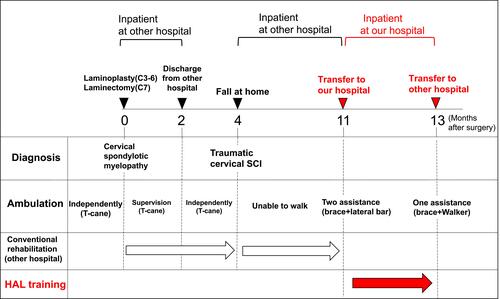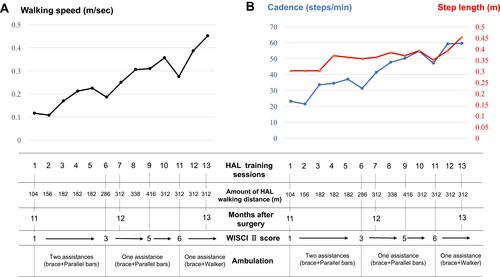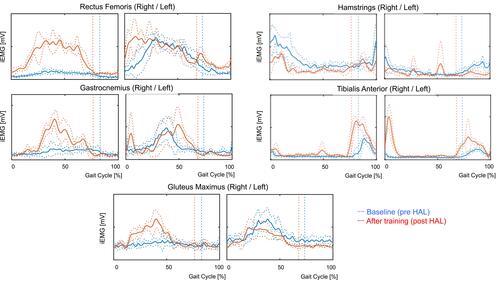Figures & data
Figure 1 Postoperative progress during hybrid assistive limb training and conventional rehabilitation at the other hospital, ambulation, and diagnosis.

Table 1 Detailed Results of the ISNCSCI Motor Score (Upper and Lower Extremity) at Baseline (Pre-HAL) and After Training (Post-HAL)
Figure 2 Entire process of the patient’s hybrid assistive limb (HAL) gait training. The graph shows the chronological improvement in walking speed, step length, and cadence in the 10-meter walking test without the HAL during HAL gait sessions. Gait speed (A) as well as step length and cadence (B) improved in each HAL session. In the first nine sessions, the patient’s walking ability (WISCI-II and ambulation) were gradually improved. After nine sessions, the patient could walk with one assistance and use brace and bilateral crutches. The walking training distance with the HAL also gradually increased.

Figure 3 Muscle activities of the rectus femoris, hamstrings, gastrocnemius, tibialis anterior and gluteus maximus without the hybrid assistive limb (HAL) at baseline (pre-HAL) and after training (post-HAL). Each muscle on the right side was activated in the stance phase after the HAL training. Vertical lines indicate the moment of toe lift.

Figure 4 Temporal profile of the angular position of the hip, knee, and ankle joint over the gait cycle, measured without the HAL at baseline (pre-HAL) and after training (post-HAL). After HAL training sessions, the maximum hip and knee extension angle on both sides during the stance phases increased. Moreover, the maximum right ankle plantar flexion angle during the stance phase increased post HAL. Vertical lines indicate the moment of toe lift.

